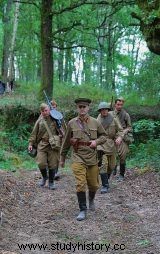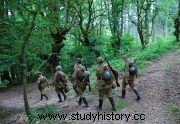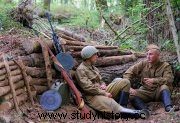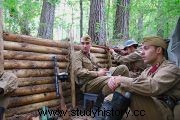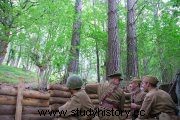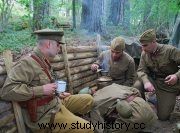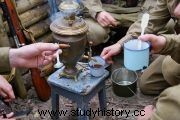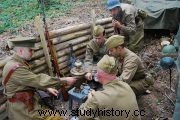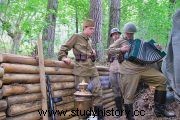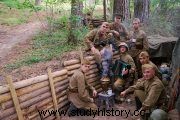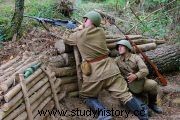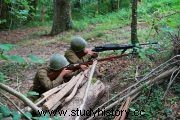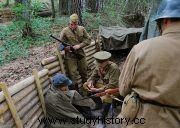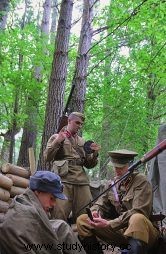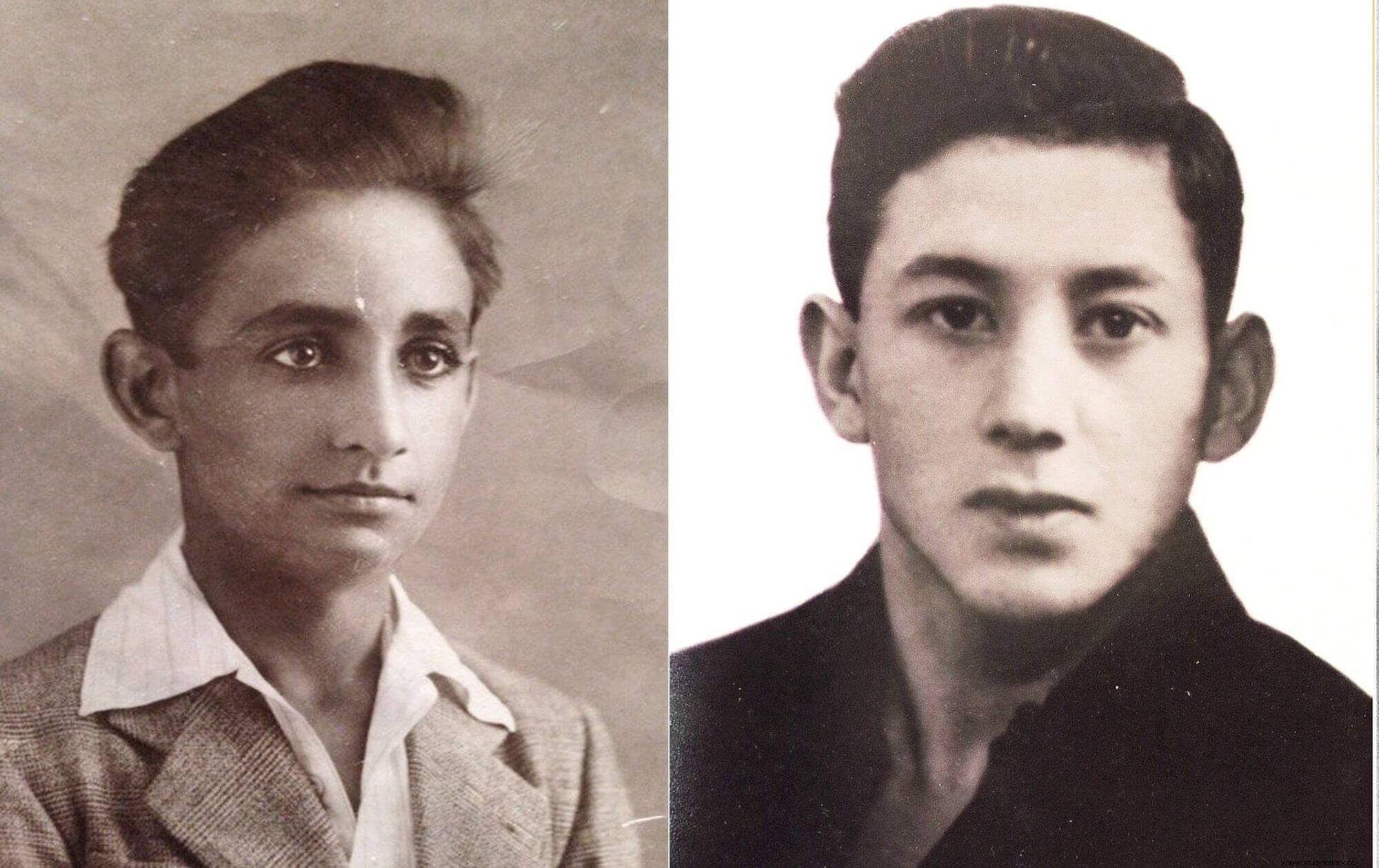
Despite the drama of COVID-19, that has weighed down practically all cultural expressions, the three years that have passed since the publication of the book Basque combatants in the Second World War at the Desperta Ferro publishing house they have helped us to continue working on the main lines of the memory project Fighting Basques , which is based on research and the elaboration of scenographies that evoke the generation of the Civil War and exile with regard to their participation in the Second World War, including in countries such as the United States migrants of economic origin and their descendants, which are also the object of our study. Thanks to this, we have linked family and local history with the world through a narrative that will take us to any setting where our people have been, with the added value of the powerful visual resource that historical recreation provides us. In this article written on the occasion of the 80th Anniversary of the fighting for Karelia We will travel to this distant border territory between Finland and Russia, where more than 70 boys from the Leningrad youth center (mostly Asturians and Basques) fought with the 3rd “Frunze” Division of the People's Militia. These militias had been hastily organized after the beginning of Operation Barbarossa, the invasion of the Soviet Union by Nazi Germany on June 22, 1941 –which would cause the Red Army incalculable losses in men and material–, just the day it was It was four years since the arrival of the expedition of children of the war sent from the port of Bilbao aboard the steamer Sontay. Let us remember that a total of 3,000 Spanish children arrived in the USSR in five expeditions during the Civil War, although the majority (2,500) came from the north. As we said in our 2018 book:“None of those parents who left their children on ships bound for Russia in the hope of giving their children a better future away from war could imagine back then that they were being sent to another , from which some would never return, and many never even knew the hell their children went through.” (1)
Enlistment and departure from Leningrad
When Germany broke the non-aggression pact it had with the USSR - popularly known as the Ribbentrop-Molotov Pact, which had made possible the partition of Poland and the Soviet occupation and annexation of the Baltic republics – soon began the evacuation to the rear of the children they had taken in in the USSR, including the Spanish, although the youngest of the Pushkin family and some older girls would not leave the encircled Leningrad until the beginning of 1942, taking advantage of the freezing of the Ladoga and the opening of the so-called “Way of Life” (2). This was not the case of those who were staying at the youth house at No. 49 Mozhaiskaya Street, aged between 15 and 18, who had begun their training and work cycle alternating their studies with their first work contract in the factories in the city's powerful industrial belt. A good part of them were enrolled in the prestigious Polytechnic Institute, whose professors and students joined the 3rd "Vyborg" Regiment of the 3rd Division of the People's Militia.
Although the factories had to continue to function, staying out of the fight was not an option in a city totally imbued with the atmosphere of the great revolutionary deeds in that summer of 1941, and ours they were no less, constituting a special case among all the Spaniards who fought with the USSR during World War II, first because of their youth (the enlistment of those who were only 15 years old was rejected, but they still kept trying until they got it , like the Asturian Maximino Roda), second because they were, for the most part, cohesive in the same unit (which only occurred in the 4th Company of the OMSBON), and third because this early enlistment of those young people was alien to the control of the leaders of the Communist Party of Spain, who would end up prohibiting it. However, at that time they had the leading role of the media and the push of propaganda, since the Spanish Civil War was still fresh. In this way, the local press published their photos and echoed a collective declaration signed by 46 of them:"We, the volunteers, are going to avenge the deaths of our fathers and mothers before the Nazis"> (3). Little did they imagine then that they would face the Finns and not these. Among them there was also a girl, like María Pardina Ramos from Madrid, who would die in combat and be decorated with the Order of Lenin.
July 5, 1941 is the date set for the beginning of the enlistment of the first young Spaniards –according to the sources we have consulted, there were a total of 74–, who joined the 3rd Regiment in the Vyborg district, where, in addition to the students of the Polytechnic, there were workers from the Karl Marx, Russian Diesel, Svetlana and Red Dawn. The decision to send the first three divisions of the popular militia to the front was postponed for a short period of time in order to give them minimal military training, although the shortcomings, including material ones, were enormous and could not be compared to those that made up the the Red Army. Finally, on July 26, 1941, the 3rd “Frunze” Division, in the absence of the 1st Regiment, was sent by train to Lodéinoye-Pole, to the northwest, where it would be integrated into the Olonets Operational Group, commanded by the Lieutenant General Vyacheslav Dmitrievich Tsvetaev. The departure to Karelia was made from the mythical Finlyandasky station, which we already recreated for the 2018 book.
The fight for Karelia
The Karelian Isthmus had been the scene between 1939 and 1940 of the so-called Winter War , which resulted in a severe military setback for the Russians due to the resistance of the Finns, who were finally forced to cede much of their territory. After the end of this first conflict, the relationship between Finland and the USSR not only did not improve, but would finally make this country tilt towards Germany due to the insecurity that reigned among its citizens, becoming the only ally of the Germans with a democratically elected government. In this way, when little more than a year had passed since the end of those hostilities, Karelia would become the scene of what would be called by the Finns Continuation War , whose start was fully coordinated with Berlin, but which was delayed until July 10, 1941 so that it would not coincide with Barbarossa and thus maintain the deception as long as possible to lengthen, in a complicated game of balance, the relations of Finland with Western powers.
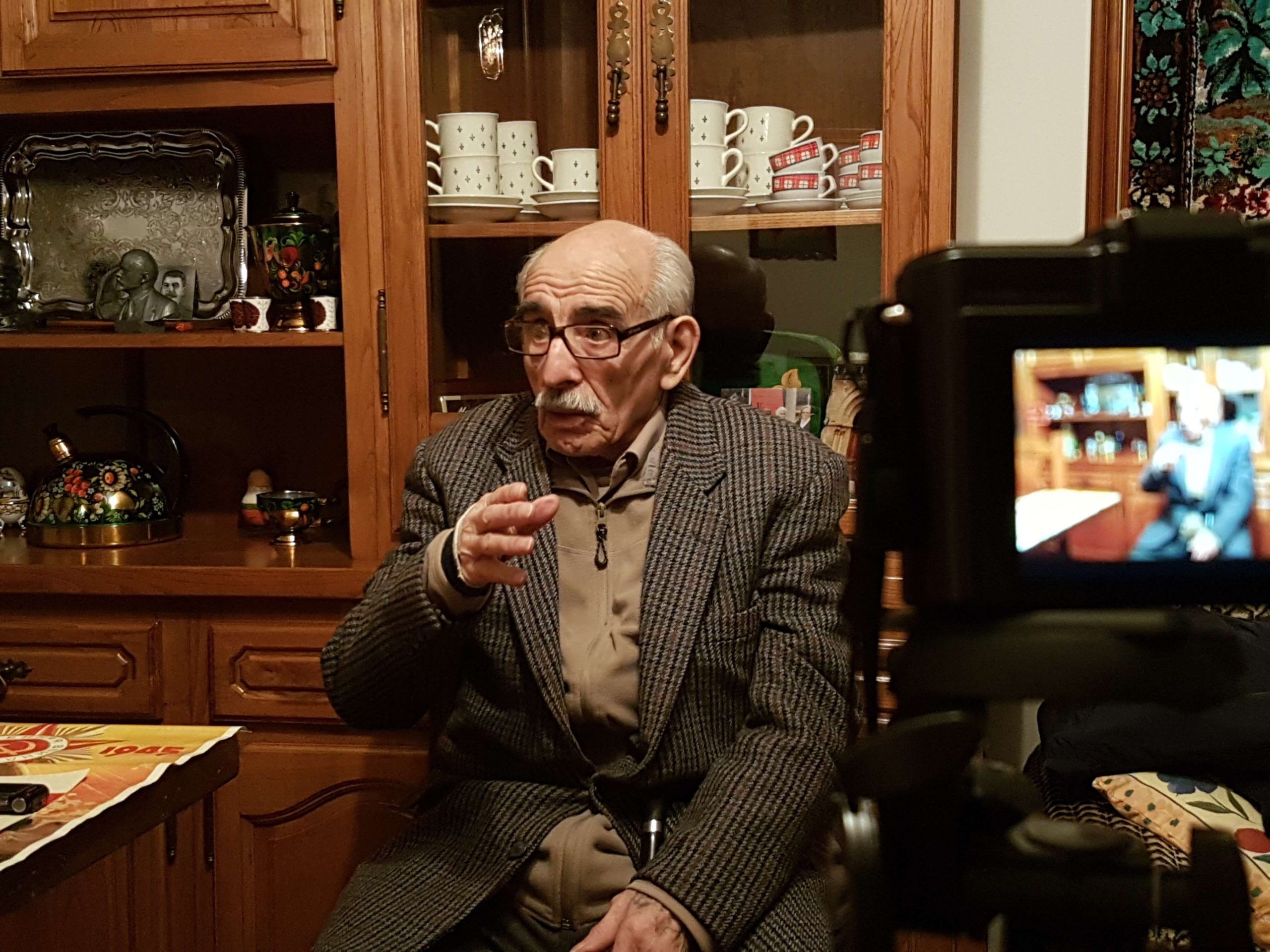
The Finns began the offensive with two Army Corps , the VI and the VII, which initially faced the 7th Army of Lieutenant General Philip Gorelenko, who had seen his forces reduced from three to two divisions and was forced to withdraw suffering heavy losses, despite offering great resistance . The unstoppable advance of the Finns took them to their next objective:Russian Karelia, the part corresponding to the isthmus between Lakes Onega and Ladoga. This is the moment when the 3rd Division “Frunze” appears in the theater of operations, where our young people were going. This is where the story of Maximino Roda, the 15-year-old boy everyone called "Peque" fits in. whom we were lucky enough to interview at his house in Villamayor (Asturias). After arriving with his regiment at the Syandeba River, east of the town of Tuloksa – where the division's artillery was already fighting in support of the 3rd Marine Brigade – the command began to distribute them along the shore in small rifle pits. “with the mission of keeping an eye on the Finns, who were on the other side of the river”:
The main objective of the 3rd Division was to take the village of Syandeba, which served as a link between the Finnish 5th Division and the 1st Chasseur Brigade (Jäger ), so its possession was vital. Despite some partial successes that could not be exploited due to energetic Finnish counter-attacks –on August 2, 1941, the 2nd Regiment managed to surround the town, destroying the Finnish rearguard–, the situation worsened for the Russian militiamen, who suffered a lot of losses, and the 3rd “Vyborg” Regiment, in which our men were, was deployed through the Syandebskoye swamp harassed by the snipers that the Finns posted in the trees, whom Maximin called “Cuckos”. On August 6 there was another assault on the town, whose defenders resisted the attack of several Soviet companies. The unit's casualty rate was extremely high, suffering the loss of 170 men on August 8. At the beginning of September the tables were definitively reversed and the 3rd “Frunze” Division was surrounded in Olonets, from where it was able to escape towards Petrozavodsk, the capital of Russian Karelia. As we said in 2018, in "five weeks of combat, a depleted, poorly armed and untrained Soviet militia division would not only manage to avoid being destroyed on several occasions, but also managed to reach Petrozavodsk" (5). The city was definitively occupied on October 1, 1941 and for the survivors a long captivity would begin in Finland that would end with the return to Spain in 1943 of only 18 of those boys, who were first exploited and then abandoned by the propaganda of the Franco regime. , But that is another story. About 50 fell throughout the theater of operations of the 3rd “Frunze” Division.
The historical re-enactment
Based on the premise of rigor and friendship, which is the basis of our historical reenactment group, we propose historical reenactment as the best way to evoke a generation that We hardly have any materials, and even more so when, as in this case, it is about commemorating such a significant anniversary, but traveling, as a novelty, a path that takes us from memory to the frontier of experimental archaeology . Because neither can we disdain the didactic possibilities that can be projected into the future by some scenographies that offer us activities such as preparing tea with a Samovar or singing some Russian songs –or those of the Civil War, why not?– to the sounds of the accordion. We also wanted to commemorate the arrival of our people in Syandeba by linking the work we have done here this July with the work carried out in the historical spaces of the battle by Russian organizations strongly involved in valuing this heritage in such a special year. such as the group "Our Polytechnic" of the St. Petersburg State Polytechnic University, which always has the presence of institutional authorities and the support of the local media.
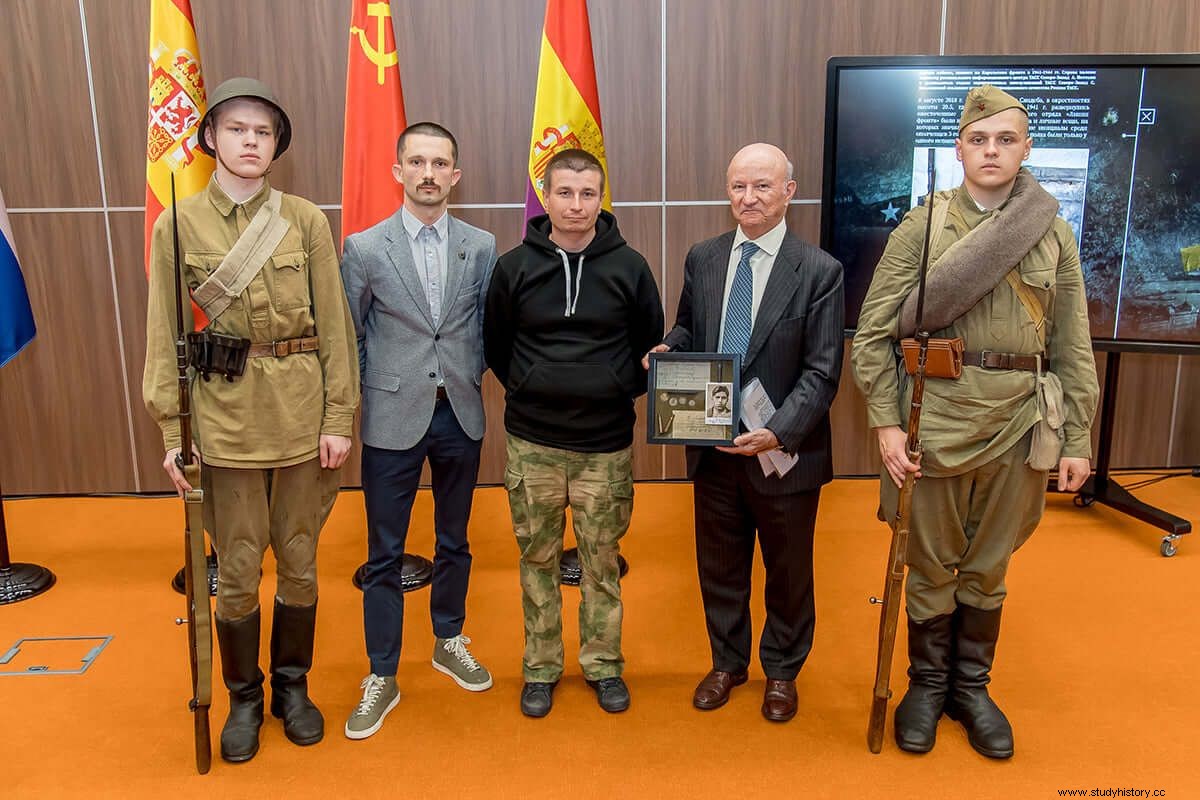
The spirit of joy and hope of the newcomers in front presides over the entire scenery –just like the green color of the forest in summer–, without denying the harsh reality of war, because it is not about that, but about portraying for the first time a human and compact team formed by friends who arrived together in Leningrad in 1937, studied, played and grew up together and marched to the front as well, motivated by the hope of settling the accounts pending from the Civil War, even though those who faced them were Finns and not the Germans who had bombed Guernica. A hope that was as ephemeral as the lives of most of those young people, but that we wanted to reflect in the images that accompany this text to get closer, through a proposal that we recognize as risky, to their personalities, because the war is not the really important when we talk about memory. We agree with Maria Feliu Torruella and Francesc Xavier Hernández Cardona that these activities "can help foster an empathic imagination" (6), in this case with the emotions and feelings of those young people.
The guiding thread of the entire scenography –and an absolutely inescapable reference for so many things, such as having been the executor of the memory of all of them for us and having had, a few months before his death, the honor of sending him, accompanying our friends Elena Alexandrova and Azucena Fernández, the recognition of the Russian government–, has been Maximino Roda . His account of the positions of the Syandeba River has allowed us to prepare a scenario that has required several days of work to prepare the land with a main trench from which a branch leaves that takes us to a forward position where there is a rifle shooter Degtyarov DP-27 machine gunner and his supplier, in the case of the character of Maximino himself. A dense forest of large pines takes us to the landscape of Karelia, where the tree is always omnipresent. Some trees that they had to cut down to entrench themselves when they arrived at the front and that we have also used to fortify using the remains of a felling, although it has not been enough, since it has been necessary to acquire more to complete the scene, which It has provided us with the setting we were looking for after consulting dozens of photographs from the time.
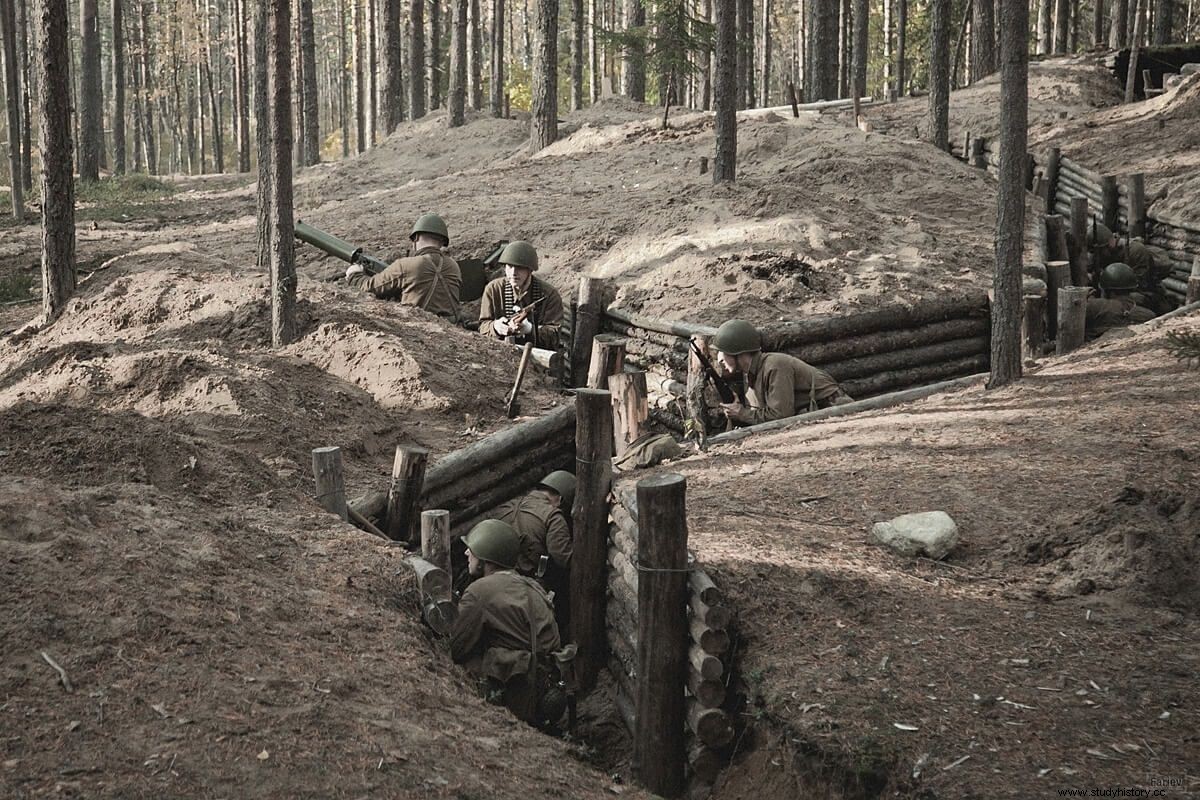
Special mention deserves the wardrobe work for the occasion , which has required a significant effort on the part of our historical recreation group, which had composed Russian characters on very few occasions, to adapt to the rigor demanded by the scene. For this, the help of a true specialist in Soviet historical recreation of the Second World War has been essential. as Iker Baz Amurrio. Without his collaboration and advice, correcting details and contributing many pieces from his collection to enrich the scene –without it being cluttered, under the premise that in "Soviet historical re-enactment less is more"–, it would not have been possible to carry out this challenge successfully. port. Finally, we would like to thank our re-enactors Eder Artal, Eneko Tabernilla, Iñaki Peña Eguskiza, Egoitz Ereño, Mikel León and Aitor Delgado for their good work and the excellent composition of characters, linking up with that scenery created more than three years ago at the Museo Vasco del Railway in which those young Asturians and Basques took a train to Karelia. A trip down memory lane that, as has been seen, did not end then and can be projected into the future with everyone's support.
Photo gallery commemorating the 80th anniversary of the fighting in Karelia (© Sancho de Beurko Association)
Click on the image to enlarge
Notes
(1) Guillermo Tabernilla and Ander González. (2018). Basque fighters in the Second World War . Madrid:Wake up Ferro. Q92.
(2) Ibid. P. 101.
(3) Ibid. Q. 100.
(4) Ibid. P. 103.
(5) Ibid. P. 104. See Claes Johansen. (2016). Hitler's Nordic Ally? Finland and the total war 1939-1945. Barnsley:Pen &Sword Military. P. 207.
(6) María Feliu Torruella and Francesc Xavier Hernández Cardona. (2013). Didactics of the Spanish Civil War . Barcelona:Iber Library. P. 158.

